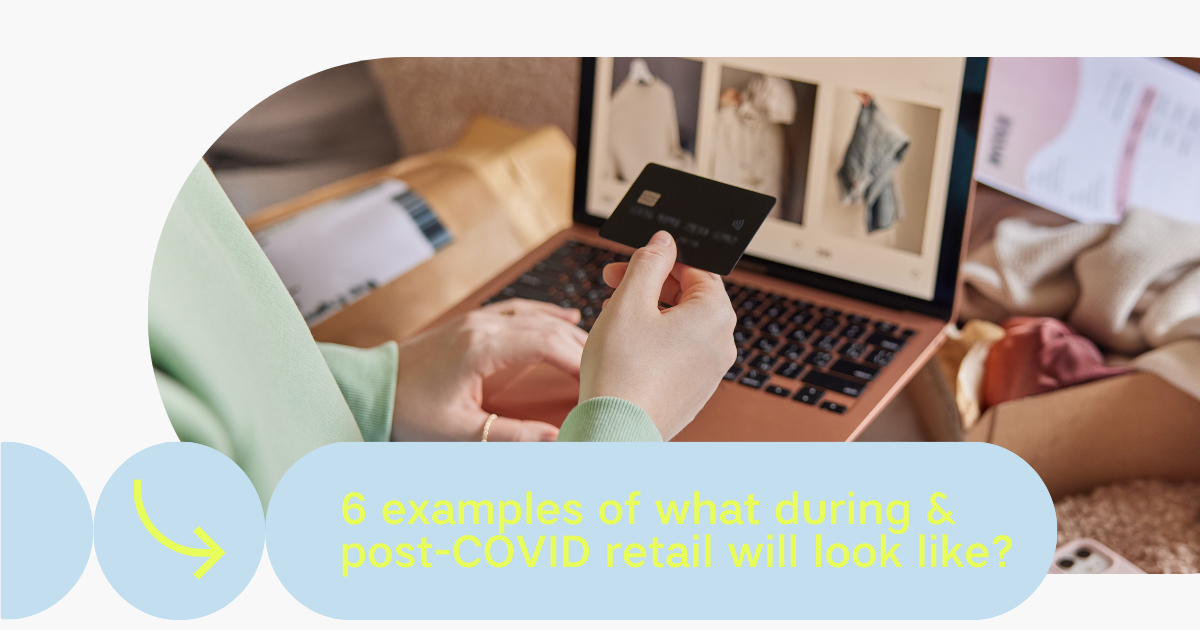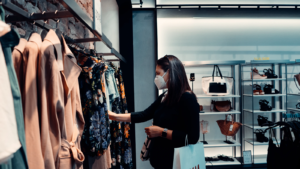No doubt that we are all dying for a glamorous, relaxed day of shopping since COVID19 has arisen in our lives. Strolling through the shopping streets, spotting the latest trends and trying out the most fashionable outfits. Sounds great, right?
Obviously, this wasn’t possible during the strict lockdown period. But even today and in the near future, walking into a retail store like we are used to, won’t be the same. COVID19 heavily influenced the retail world, in which both consumers and brands are currently finding their way.
Which changes do we need to take into consideration, and how to deal with all of this?
- The ongoing growth of e-commerce
The perfect alternative to a shopping day is pretty obvious: online shopping from your couch. For many, familiar territory, for others, a completely new experience. At the peak of the pandemic, online sales grew by 50%. Overall, we can assume that online shopping became a part of our human habits, and we won’t stop following this habit.
2. Buy online, pickup in store
A variety of stores, going from large chains to small boutiques, started with a curbside pickup during the COVID-period. Apart from the convenience, consumers especially appreciate the safety measures taken by retailers during this pickup-process. Consequently, the amount of curbside orders increased by 208% during the pandemic. Moreover, 59% of the consumers states to be inclined to continue using pickup-method also after the COVID. In line with this trend, is the increasing number of dark stores, which are traditional retails stores which are converted to local fulfillment centers. By doing so, a number of advantages are created such as increasing efficiency, enhanced quality and the availability of a full product range.
3. Emotional connection
The lockdown isn’t a pleasant period for anyone. Brands are also aware of this. Consequently, the creation of an emotional customer-relationship has become more important than ever. Approach the consumer in a personal way, present your brand as something approachable & human, and build a personal connection. These aspects need to be given priority, contrary to pushing product sales.
4. The digital direction
The speed with which sectors digitize has accelerated exponentially through this pandemic. Think of education, entertainment, work; all industries which were steadily evolving into a more digital direction during the pre-pandemic period & today they are all forced to fully operate digitally, involving the unavoidable problems and obstacles. Even in the war against COVID, where we are developing save & attractive shopping environments, technology and automation are again central. Think of robots arranging and cleaning inventory, a fully automatized supply chain system, or touchless self-checkout points; it are all technological applications which are in line with safety and security measurements.
5. Balanced inventory
It cannot be denied that stocks have only made things more difficult during this past period. We are used to start selling summer collections at the beginning of spring, and school supply actions are rolled out in July. Consequently, an enormous amount of backlog inventory is created. The main solution to all of this in returning to a more balanced inventory which is in line with the current, realistic calendar.
6. Rethink your business
What already was going on before COVID-19, only became bigger the past months. Businesses can no longer classify e-commerce as an add-on to their business. Crucial steps need to be taken, and now is the time. Therefore, a seamless multi-channel customer experience is key. Retailers’ websites need to be mobile-responsive and a reliable digital experience needs to be offered.
Next to this, an adapted brick and mortar shopping experience needs to be created. Efforts such as greeting customers and handling complaints are no longer sufficient. You need to make sure that the in-store actions are that compelling, so customers are attracted to visit your store. Think of services which facilitate and strengthen a long-term customer relationship to lure your clients into your physical store.
This post is also available in: Dutch





